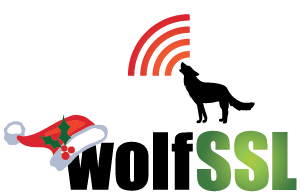2025 marked a year of extraordinary recognition for Daniel Stenberg and curl, celebrating both technical excellence and societal impact. Daniel was honored with the European Open Source Achievement Award, highlighting his enduring contributions to open-source software and acknowledging the global influence of curl in enabling reliable and secure data transfers. Later that year, he was […]
Read MoreMore TagCategory: cURL
curl Award Month: Global Impact and Innovation
By 2020, curl’s reach extended far beyond the developer community, with its reliability and security earning international recognition. That year, Daniel Stenberg received a Google Patch Grant to further improve libcurl’s security, highlighting the importance of his work in safeguarding one of the most widely used software components in the world. In 2021, curl’s contributions […]
Read MoreMore Tagcurl Award Month: Recognition in Sweden and Beyond
By 2016, curl had firmly established itself as an indispensable tool for developers worldwide. Its impact was no longer just technical; it was being recognized nationally for its significance and influence. In 2016, Daniel Stenberg was named Second Best Developer in Sweden, an award that highlighted not only his coding expertise but also his commitment […]
Read MoreMore Tagcurl Award Month: Early Recognition for a Rising Open Source Star
In the world of open source, few tools have had as lasting an impact as curl. By 2009, curl was already powering countless applications, devices, and services around the globe. Around this time, curl began receiving recognition for its innovation, reliability, and impact on the open-source community. In 2009, Daniel Stenberg received the Nordic Free […]
Read MoreMore TagCRA Compliant curl
As the Cyber Resilience Act (CRA) is getting closer and companies wanting to sell digital services in goods within the EU need to step up, tighten their procedures, improve their documentation and get control over their dependencies I feel it could be timely to remind everyone: We of course offer full support and fully CRA […]
Read MoreMore TagSecure Data Transfers on BSD Systems
Many developers working on FreeBSD, OpenBSD, and NetBSD may not realize that cURL can be integrated with wolfSSL for secure communications. This combination allows applications to use modern TLS protocols and FIPS 140-3 validated cryptography on BSD platforms. Secure communication is critical in servers and embedded devices. Using wolfSSL with cURL ensures standards-compliant TLS connections […]
Read MoreMore TagUsing ECH with curl and wolfSSL
The Server Name Indication (SNI) extension to TLS allows the client to specify the name of the server it is trying to connect to, which allows the server to select between multiple virtual servers and present the appropriate certificate for the connection. The client sends the server name as a part of a Client Hello […]
Read MoreMore TagComing Soon: tiny-curl for Zephyr RTOS
At wolfSSL, we’re excited to announce plans for a tiny-curl port tailored for Zephyr RTOS. This will bring lightweight HTTPS client capabilities to one of the most widely used real-time operating systems for embedded devices. Stay tuned for updates as we work to integrate tiny-curl’s proven functionality into the Zephyr ecosystem. If you have questions […]
Read MoreMore TagPost-Quantum Cryptography with curl
At wolfSSL, our commitment to advancing post-quantum cryptography (PQC) is stronger than ever. With the rise of quantum computing threats, securing data from “harvest now, decrypt later” attacks is a critical focus for us. That’s why we are actively enhancing curl with robust PQC support to safeguard your communications well into the quantum era. wolfSSL […]
Read MoreMore Tagcurl-up 2025 Recap
Special thanks to Apify for sponsoring curl-up 2025! The much-anticipated curl-up 2025 has wrapped up, bringing developers. Open-source enthusiasts, and industry leaders together in Prague. Over the weekend, sixteen insightful curl-related presentations were delivered, sparking discussions not only during the sessions but also over lunches, coffee breaks, and evening gatherings. If you missed it or […]
Read MoreMore Tag
